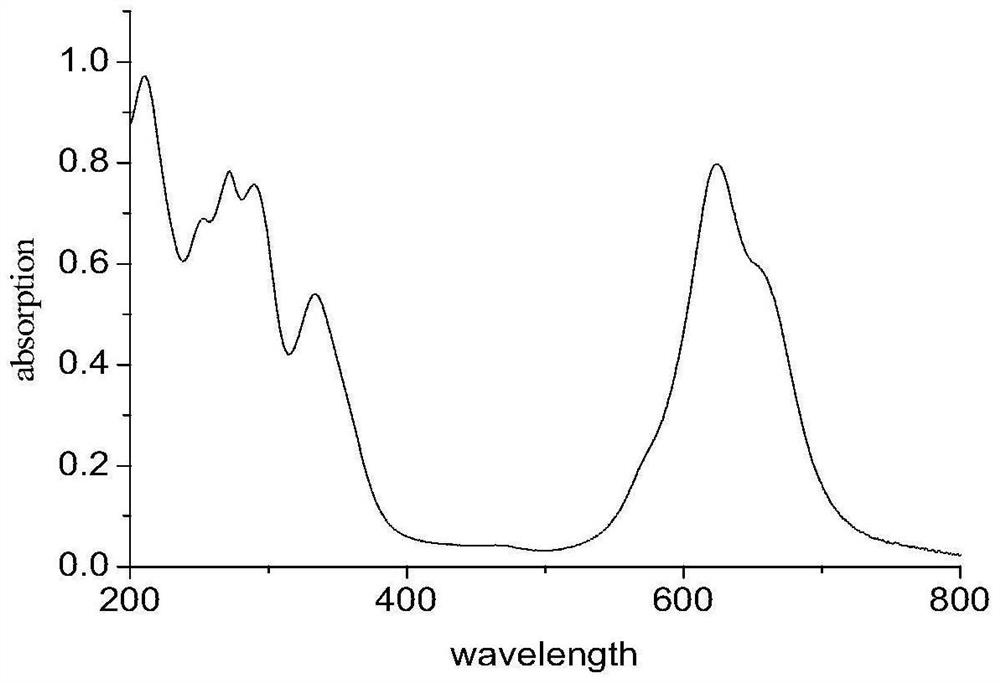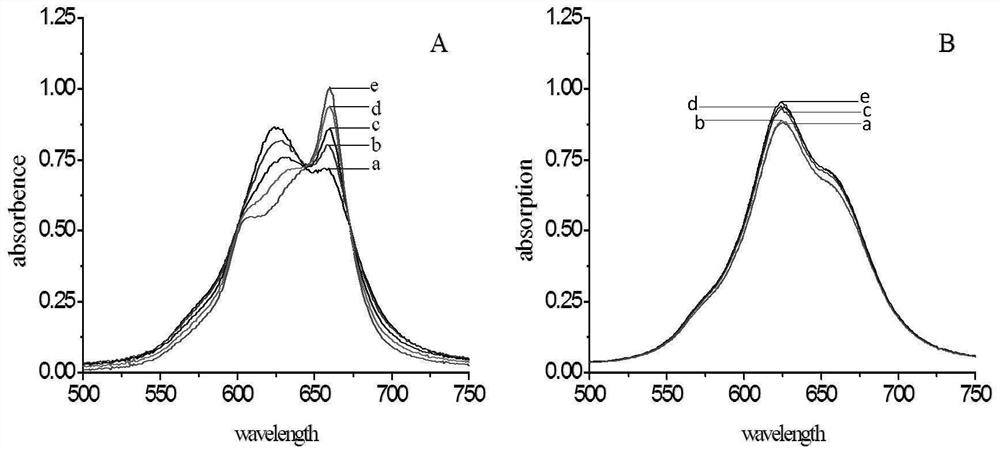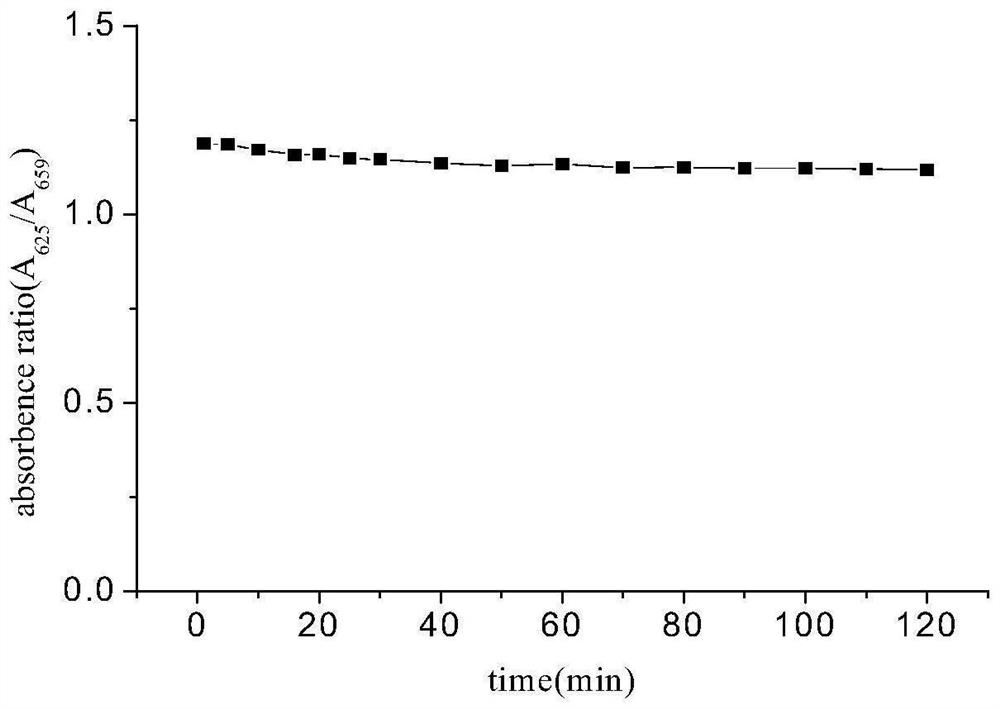Method for determining long-chain cationic surface active agent by tetrasulfo metal phthalocyanine
A surfactant and base metal technology, applied in the field of photometric analysis, can solve problems such as complex operation, and achieve the effects of high recognition, high application potential and high stability
- Summary
- Abstract
- Description
- Claims
- Application Information
AI Technical Summary
Problems solved by technology
Method used
Image
Examples
Embodiment Construction
[0032] In order to make the technical problems, technical solutions and beneficial effects to be solved by the present invention clearer and more comprehensible, the present invention will be further described in detail below with reference to the accompanying drawings and embodiments.
[0033] In a 5.0 mL container (plastic centrifuge tube), add water, 300 μL pH 1.0 phosphate broad buffer, and a certain volume of 1.0 × 10 -4 mol / L long-chain cationic surfactant and 60 μL concentration of 1.0×10 -3 mol / L of tetrasulfonickel phthalocyanine solution to make the final volume of 3.0 mL, mix well, place at room temperature for 5 min, scan the absorption spectrum on the spectrophotometer, and measure the absorbance.
[0034] The absorbance of the solution at 625 nm (dimer) is recorded as A 1 , the absorbance at 659nm (monomer) is recorded as A 2 , the absorbance ratio is A=A 1 / A 2 calculate. The absorbance ratio is plotted against the concentration of the cationic surfactant t...
PUM
 Login to View More
Login to View More Abstract
Description
Claims
Application Information
 Login to View More
Login to View More - R&D
- Intellectual Property
- Life Sciences
- Materials
- Tech Scout
- Unparalleled Data Quality
- Higher Quality Content
- 60% Fewer Hallucinations
Browse by: Latest US Patents, China's latest patents, Technical Efficacy Thesaurus, Application Domain, Technology Topic, Popular Technical Reports.
© 2025 PatSnap. All rights reserved.Legal|Privacy policy|Modern Slavery Act Transparency Statement|Sitemap|About US| Contact US: help@patsnap.com



